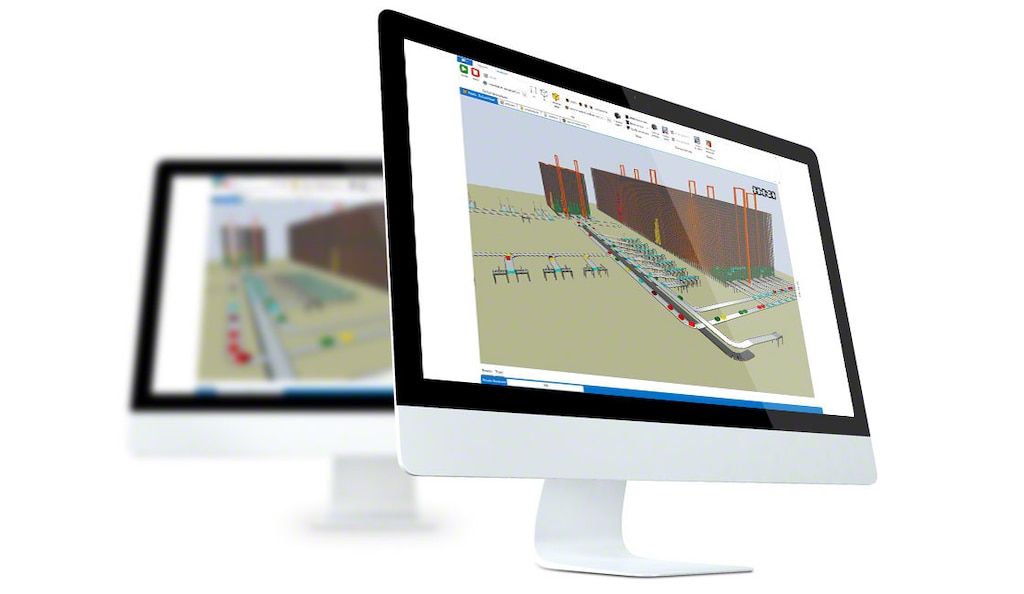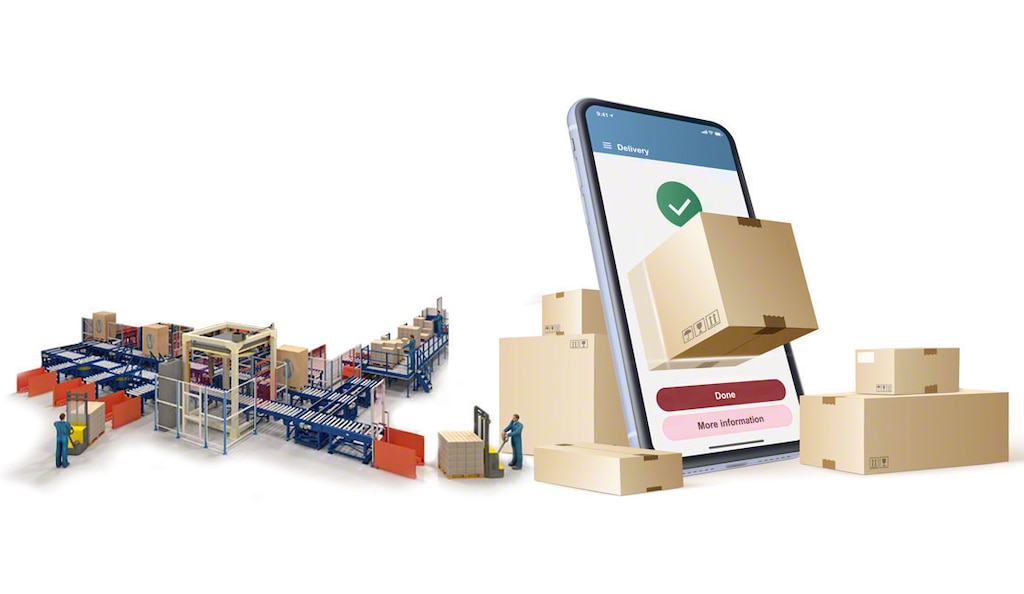LOGISTICS RESEARCH
Customers use multiple channels during their shopping journey and expect to have a seamless purchasing experience whether shopping online, going to a physical store, or combining both modalities. This smooth transition between traditional and online channels, popularly known as the omnichannel experience, is transforming the world of logistics and warehousing.

How can businesses satisfy customers’ growing demand for seamless experiences and fast deliveries? One way to improve the omnichannel experience involves paying attention to how warehouses are configured, says Joakim Kembro, Associate Professor and Director of the MSc in Logistics and Supply Chain Management at Lund University in Sweden. His latest research findings, published in the International Journal of Physical Distribution & Logistics Management, demonstrate how specific warehouse configurations may help retail businesses improve their omnichannel strategies.
“The ecommerce boom is challenging the traditional way of configuring warehouses. Compared to other distribution centers, omnichannel warehouses must be designed to effectively combine different types of flows to send goods to physical stores and online customers,” says Kembro. “In omnichannel retailing, today more than ever, warehouses play a strategic role in meeting customers’ demands and ensuring a steady distribution process.”
Configuring a warehouse for omnichannel success is a complex endeavor: logistics experts must weigh many factors. For instance, while store replenishment often involves planned orders with big volumes for indirect demand, online customer purchases typically entail small orders, and demand is highly variable. Mixing these two different logistic needs raises questions: Should omnichannel retailers combine distribution for retail stores and ecommerce in a single warehouse or separate the two? When is it best for ecommerce businesses to equip their warehouses with automated solutions, and which type of automation system fits best? The answer to these questions is not black and white — it depends on the type of ecommerce business, context, and customer needs.
In omnichannel retailing, warehouses play a strategic role in meeting customers’ demands and ensuring a steady distribution process
“When we started examining this issue, we saw that retailers were following different paths in their warehouses,” says Kembro. “For instance, while some companies integrated their online orders and retail store distribution in a single warehouse, other retailers chose to separate the two. And while some of the big players opted for large investments in automation, other retailers targeted specific technologies to solve their challenges. But no matter what warehouse configuration they used, they were all making these configuration decisions with limited guidance from research,” says the expert.
Based on these differences, Kembro and his co-author, Andreas Norrman, set out to find evidence to show how warehouse configuration may determine omnichannel success. The researchers conducted a multiple-case study with six leading omnichannel retailers from different sectors including fashion, consumer electronics, and construction materials. The cases are among the largest retailers in their respective sectors in Sweden and represent the frontline in omnichannel logistics.
After site visits to observe the warehouses’ design and operations, as well as face-to-face interviews with multiple decision-makers, the authors conducted data analysis to investigate how warehouse configurations can contribute to improving the omnichannel experience.
The cases analyzed included different contexts, ranging from low- to high-value products, from small to bulky products, from fairly homogeneous assortments to a large mix, and from national to international market focus and distribution.
Omnichannel warehouses: what’s the best configuration?
In their study, the researchers reveal how contextual factors can influence warehouse configuration choices — and why these choices are important in determining omnichannel strategies. According to the findings, the four most influential factors logistics experts should bear in mind when configuring their omnichannel warehouses are: the number of stock-keeping units (SKUs), order fulfillment times, total number of orders, and goods size.
“The trend in omnichannel businesses is that online sales are driving order fulfillment times to become even shorter, and the number and variation of SKUs and orders are growing. Hence these factors will likely play an even bigger role when designing future omnichannel warehouses,” says Kembro.
Depending on the specifics of each of these four factors, warehouse configurations may increase in complexity. “If you have very little variation in the goods size and order characteristics, it is easier to tailor your warehouse configuration. But as soon as you start to add variation in the types of orders you receive — for instance, mixing in retail store orders with ecommerce orders — you need to start putting more money into your solution,” says Kembro.
According to the findings, the most influential factors for omnichannel warehouse configuration include assortment range, order fulfillment times, total number of orders, and goods size
When configuring an omnichannel warehouse, the study also suggests taking into account additional contextual factors such as package standardization, differentiation between store replenishment orders and online orders, SKU differentiation (e.g., single versus multipack), store order size (number of items), and share of single-line orders vs. share of click-and-collect. “The combination of large flows for store replenishment and the continuously growing ecommerce boom make these contextual factors important for omnichannel retailers,” say the authors.
Handling trade-offs in warehouse configurations
“Our analysis shows that certain factors are more important for some retailers, while for others, almost all factors are relevant and could drive decisions in totally different directions,” says Kembro. “For one retailer, configurations that increase speed may be crucial, while others should focus on configurations that achieve economies of scale, cope with complex tasks, or increase flexibility to handle demand uncertainty.”
From their analysis, the authors show that the larger the difference between store replenishment orders and online orders, the more complexity the warehouse must handle. A similar pattern happens with stock-keeping units. The more SKUs and the more varied these are, the more complex the warehouse configurations become. “A warehouse with standardized sizes of goods and packages such as the fashion industry may opt for more streamlined configurations. But retailers with a large mix of SKUs may need to implement a variation of picking methods and zones combined with automated solutions,” says Kembro.
Ecommerce businesses facing demand uncertainty can benefit from using automated solutions for integrating store and online processes
Automation solutions for flexibility
For companies facing changing market dynamics and demand uncertainty, the authors recommend focusing on flexibility, which is created by using warehouse configurations where capacity can be scaled up or down weekly and over a specific season. “Warehouse configuration needs are influenced by weekly shifts in demand and seasonal peaks such as Black Friday, where suddenly ecommerce businesses may experience a 500% increase in demand,” says the expert.
In scenarios of demand uncertainty, automation can make a difference. Ecommerce businesses facing demand peaks and uncertainty can benefit from using automated solutions for integrating store and online processes. Automation in warehouses has moved from a question of if to how, says Kembro. “The new generation of automation with artificial intelligence is changing the game and bringing flexible solutions that were unthinkable in the past. Years ago, only a few companies were pioneers in automation. In retailing, medium-sized and large companies are now looking into automation and making it a priority. Their focus is on finding automated solutions that can reduce lead and throughput times, increase flexibility, and minimize errors.”
Speed in the warehouse
For companies wishing to increase speed in the warehouse, the priority should be achieving fast flows with minimal handling. In other words, similar activities should be carried out as few times as possible, and warehouse configurations should strive to eliminate all forms of double handling and potential bottlenecks. “One solution to increase speed in the warehouse is to integrate storage for store and online, making SKUs for online orders available for picking directly instead of first moving these goods through the main warehouse before reaching a separate online storage area to be picked again,” says Kembro. “Other interesting configurations to increase speed in the warehouse include the SKU extraction method, which postpones sorting, and high-speed automation solutions combined with cross-docking.”

Some of these configurations, Kembro adds, may also contribute to improving warehouse space. “By integrating storage locations between store and online, and combining automation with cross-docking, it’s possible to free up space in the warehouse.”
Optimal warehouse configuration: a balancing act
In summary, configuring the right warehouse for omnichannel success is a balancing act. The more challenges that must be addressed in a warehouse, the more complex the decisions become when trying to identify the best configuration to improve omnichannel strategies.
The authors issue a word of caution: “While it is good to compare, it could be dangerous to just copy-paste configuration solutions from other warehouses thinking that, if the business is very similar, their solution will work for yours, too — it may, or it may not. It’s very important to understand what your context is and invest time in warehouse design and planning.”
“If retailers could more easily benchmark and understand each other’s experiences regarding what configurations fit in different contexts, they could more easily pick a better future path for their omnichannel logistics. We hope our research has pointed out the first steps on one potential way forward,” the researchers conclude.
Original research publication: Kembro, J.H. and Norman, A. (2021), "Which future path to pick? A contingency approach to omnichannel warehouse configuration." International Journal of Physical Distribution & Logistics Management, Vol. 51 No. 1, pp. 48-75.
Link to the original article: (open access): https://www.emerald.com/insight/content/doi/10.1108/IJPDLM-08-2019-0264/full/html
